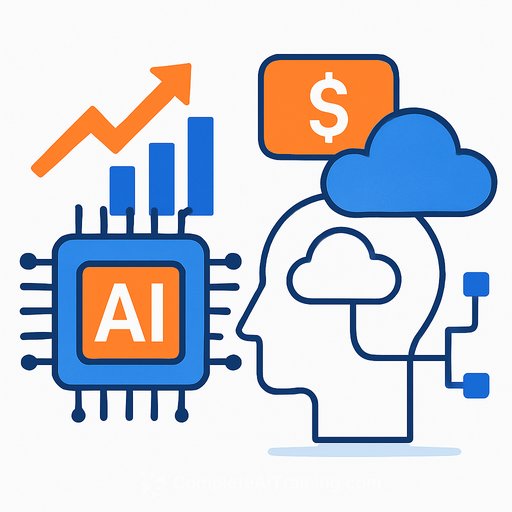FSB Warns: AI Concentration Risk Is Rising for Financial Institutions
The Financial Stability Board (FSB) has reiterated a clear warning: concentration risk in the AI supply chain is building, and finance is exposed. Adoption of generative AI remains high in the sector, yet dependency is clustering around a few providers across chips, cloud, data, and model development.
The concern is straightforward. If core business lines and critical operations rely on a small set of vendors, a single disruption can cascade across functions, desks, and markets. Substitutability is limited, and switching costs are high.
Where the Risk Is Highest
- Chips: The hardware market for AI accelerators is the most concentrated link in the chain, creating potential single points of failure for compute capacity.
- Cloud: AI infrastructure is "significantly concentrated" among a handful of hyperscalers. Outages, throttling, or geopolitical constraints can bleed into model access and uptime.
- Data and Models: Training datasets and foundation models are controlled by a small number of firms, which limits true diversification.
Why Finance Should Care Now
- Operational resilience: If AI is embedded in underwriting, surveillance, pricing, or client service, a provider outage becomes a business outage.
- Vendor lock-in: Proprietary stacks and tooling increase switching friction and weaken negotiating leverage.
- Regulatory exposure: Supervisors are watching third-party concentration and model risk. Expect questions on exit plans, auditability, and controls.
- Cost volatility: Tight GPU supply and changing pricing models can swing unit economics for AI workloads.
Big Tech's AI Spend Raises the Stakes
Recent mega-deals between major chip designers, cloud providers, and leading AI startups signal an arms race. The scale of these agreements has triggered warnings from public authorities, including the Bank of England, about the potential for an AI bubble that could spill into equity markets. Others argue the runway for AI demand remains long, but concentration risk persists either way.
Action Plan: Controls You Can Implement This Quarter
- Map dependencies: Build a live inventory of AI use cases, models, datasets, and fourth-party components (chips, clouds, APIs). Flag single-vendor concentration.
- Set concentration limits: Track spend, workloads, and critical functions by provider. Use thresholds and KRIs to trigger diversification.
- Engineer portability: Standardize interfaces, keep model artifacts and prompts portable, and avoid proprietary lock-ins where possible.
- Diversify providers: Use multi-cloud or cloud + colocation/on-prem for critical inference. Keep a secondary model ready for failover.
- Contract for resilience: Negotiate GPU capacity reservations, uptime SLAs, incident reporting, audit rights, and transparent sub-processor disclosures.
- Test the failover: Run "provider down" playbooks. Simulate loss of a chip vendor or a region. Measure RTO/RPO for AI workflows.
- Governance and MI: Board-level reporting on AI concentration, material risks, and remediation. Tie spend approval to portability and resilience criteria.
Portfolio Lens: What It Means for AI-Exposed Equities
- Supply chain bottlenecks: Tight GPU supply can drive pricing power and margin shifts for chipmakers and hyperscalers.
- Customer concentration risk: If key customers rely on a narrow set of providers, outages or regulatory actions could affect revenue durability.
- Capex intensity: Watch guidance on AI capex, energy costs, and data center timelines. Stress test scenarios where demand normalizes or supply loosens.
- Policy risk: New guidance on third-party risk and operational resilience can change costs and compliance burdens for AI platforms.
What to Watch Next
- FSB and central bank updates on third-party risk and AI governance.
- Export controls or supply disruptions in high-end chips and optics.
- Outage reports from hyperscalers and major AI platforms.
- Open-source model progress vs. proprietary offerings for enterprise workloads.
Resources
Bottom line: AI is becoming core infrastructure in finance. Treat concentration as a first-order risk, engineer portability from day one, and test your Plan B before you need it.
Your membership also unlocks:





